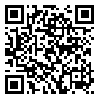Volume 7, Issue 4 (2004)
CLR 2004, 7(4): 159-177 |
Back to browse issues page
Download citation:
BibTeX | RIS | EndNote | Medlars | ProCite | Reference Manager | RefWorks
Send citation to:



BibTeX | RIS | EndNote | Medlars | ProCite | Reference Manager | RefWorks
Send citation to:
Mosaffa N. Evaluation of U.N. Human Rights Mechanism Charter Based and Treaty Based Organs. CLR 2004; 7 (4) :159-177
URL: http://clr.modares.ac.ir/article-20-5517-en.html
URL: http://clr.modares.ac.ir/article-20-5517-en.html
Assosiat Professor, Faculty of Law and Political, Science University of Tehran
Abstract: (11354 Views)
Nasrin Mosaffa
Assosiant Professor, Faculty of Law and Political, Science University of Tehran, P.O. Box 14155-6448
Since the adoption of U.N. charter in 1945 and later Universal Declaration of Human Rights in 1948, U.N. organization continuously compiled a set of international human Rights instruments. With Universal acceptance, discussion around the human Rights norms in 1945 changed to legal obligations of states in international community. Although it is believed that the first and most important way for implement action of international Human Rights instruments is national support of them, in all over the world it is emphasized on the necessity of strengthening U.N. Human Rights mechanism for better and effective support of rights. U.N. mechanism are two parts: charter based and treaty based organs which their effectiveness relates to different factors. Structure, U.N. overall capacity and political interest are among them. Main purpose of this paper is to consider the two set of mechanism with special attention to U.N. Human Rights Commission and 6 treaty bodies, and also to evaluate their effectiveness and challenge.
Received: 2012/04/30 | Accepted: 2012/04/30 | Published: 2012/04/30
| Rights and permissions | |
 |
This work is licensed under a Creative Commons Attribution-NonCommercial 4.0 International License. |







